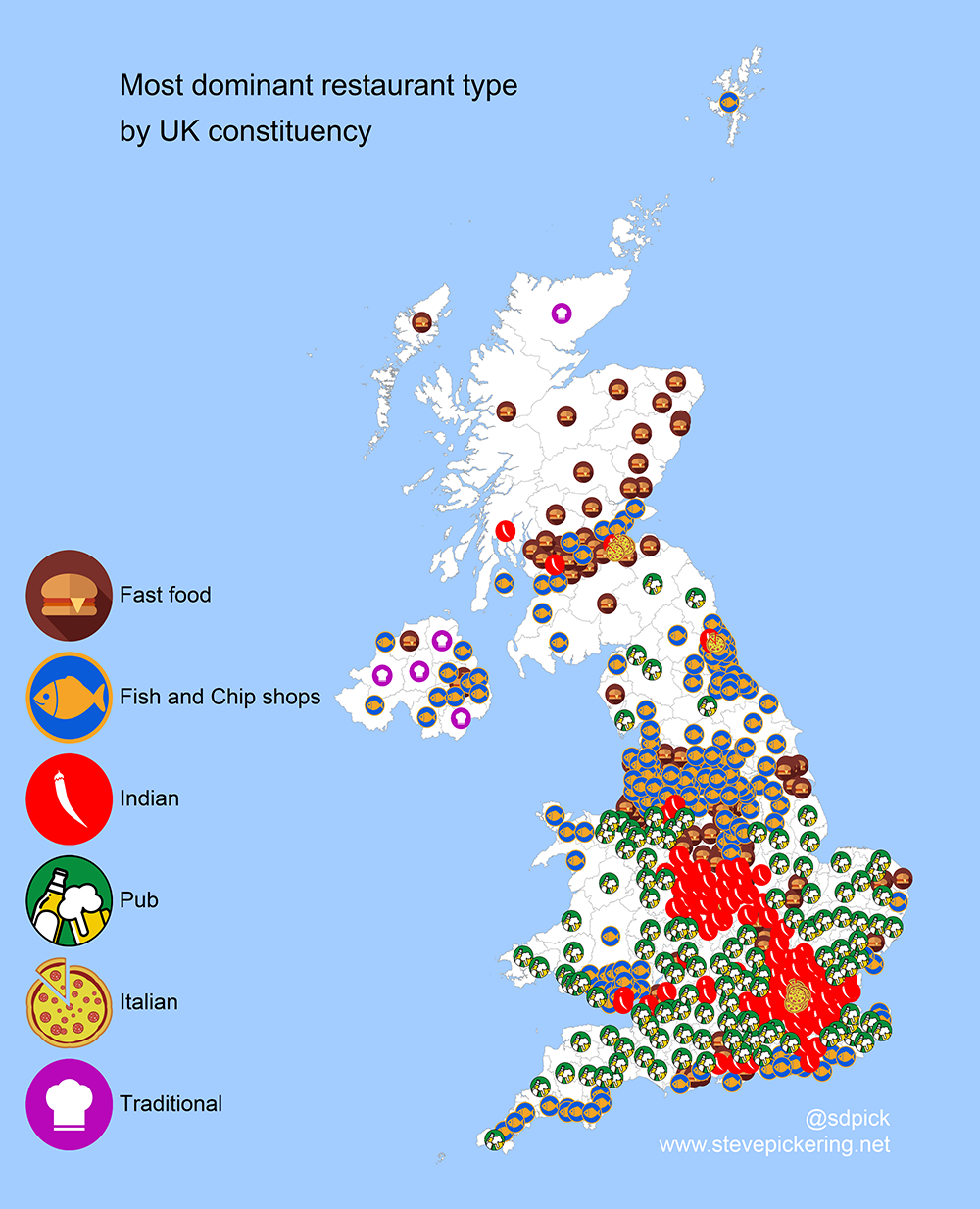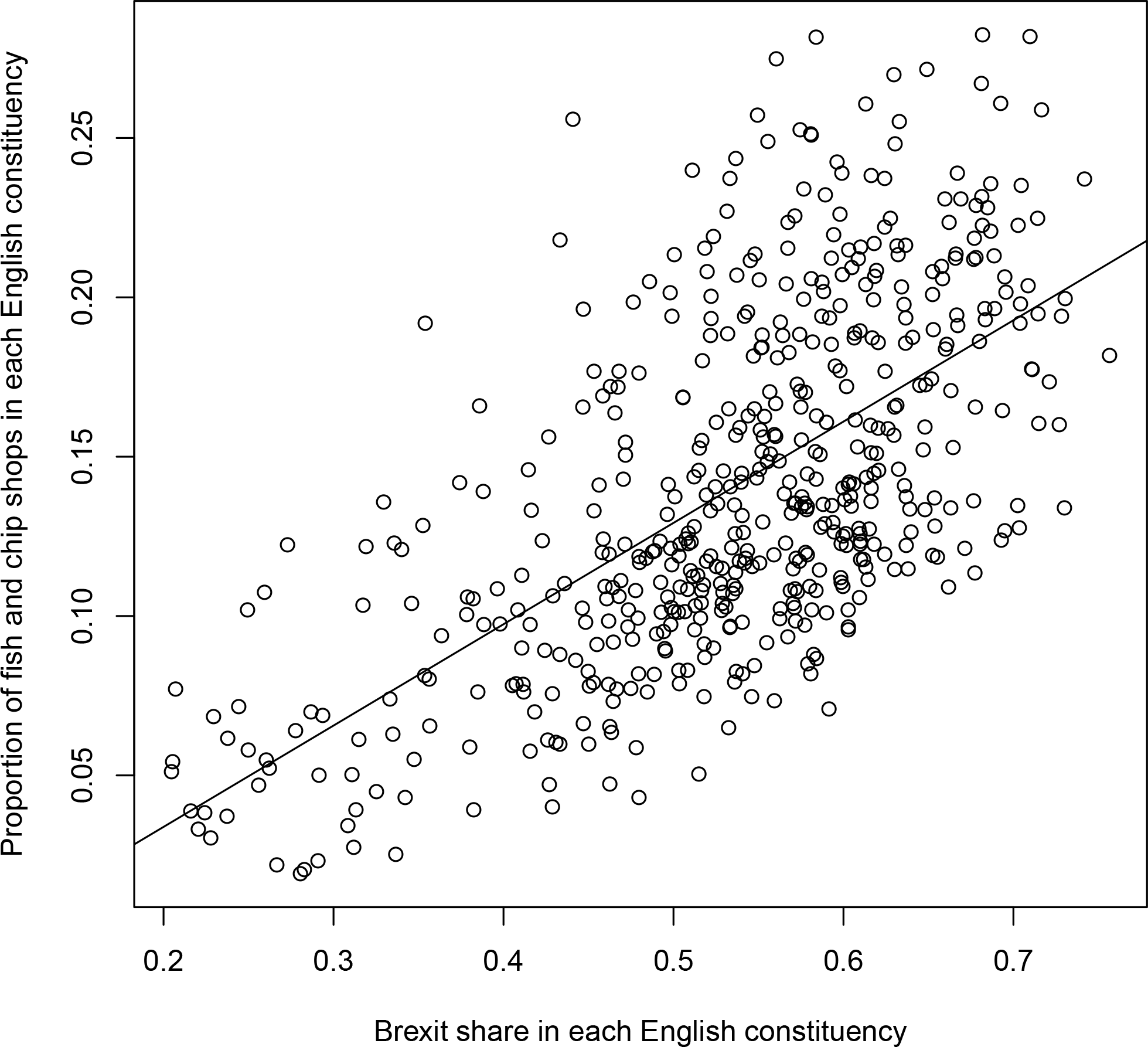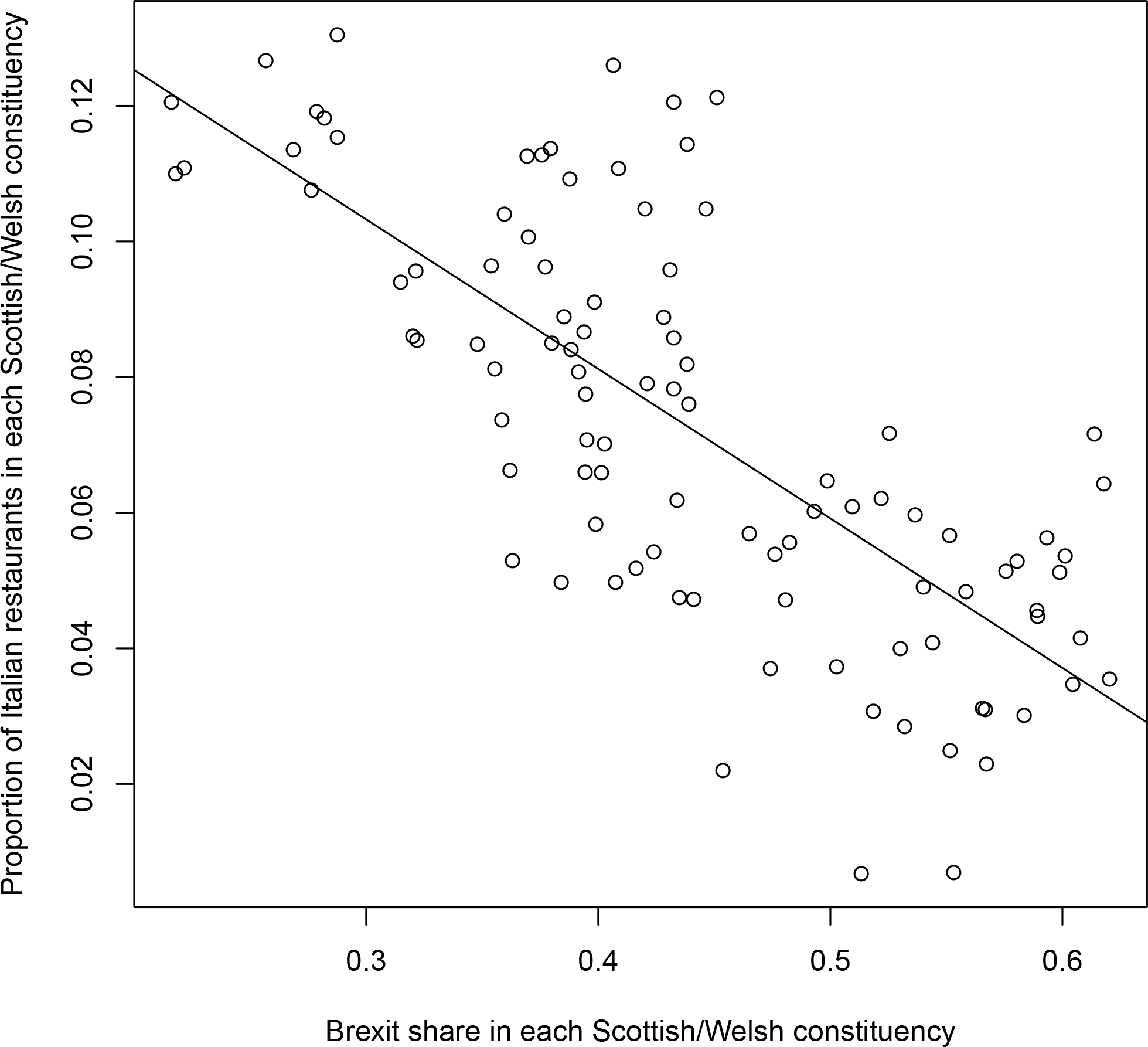A local preference for fish and chips over exotic foreign fare such as spaghetti bolognese or chicken tandoori can help predict an area’s taste for Brexit, new analysis shows.
A study of the UK’s 650 constituencies found that those with a high proportion of fish and chip shops were more likely to have voted to leave the EU in 2016 than those where Indian or Italian restaurants are more popular.
“Many factors have been considered to explain why the UK voted by a margin of 52% to 48% in the 2016 referendum to leave the European Union. These include opposition to supranationalism, fears of immigration, levels of education, disinformation, age – the list goes on,” said Dr Steve Pickering, a political scientist at Brunel University London, who posted the study on self-publishing platform Medium.
“Yet to date, no research has looked at the diversity of restaurants in parliamentary constituencies to see whether it relates to the Brexit vote.”
Dr Pickering began by using the online version of the Yellow Pages, Yell.com, to discover which cuisine ruled the local restaurant market in each of the UK’s postal code areas, with six cuisines in particular making up the lion’s share – fast food, fish and chips, Indian, gastro-pubs, Italian, and ‘traditional’ restaurants.
He found that when plotted on a map, the six dominant restaurant types appear in clear regional clusters, with fish and chips being most popular across the north of England and around coastal areas, whilst Indian cuisine is most popular along a balti-belt running from the South-East up into the Midlands.

“Of these six types of restaurant, there does seem to be something going on with the Brexit vote – there is a positive relationship between the Brexit vote and the proportion of fish and chip shops across the UK. This is most pronounced in England,” said Dr Pickering.
He added: “Stepping away from fish and chip shops, the relationship is reversed when we look at Italian restaurants. This becomes most pronounced in Scotland and Wales – the greater the proportion of Italian restaurants, the lower the Brexit share.”
Dr Pickering proposes that the reason for this correlation is that a large proportion of fish and chip shops in a constituency is an indicator that the area has a low level of diversity, and that areas where diversity is low show a greater support for Brexit.

Whilst the proportion of fish and chip shops isn’t as reliable an indicator of Brexit sentiment as other factors, such as the proportion of the population with a university degree, the proportion of chippies remains significant even when other factors like home ownership and population density are added into the mix.
“The proportion of fish and chip shops isn’t quite as robust as some other variables, such as the percentage of constituents who have a university degree. Nevertheless, the relationship is there and should not be discounted,” said Dr Pickering.
“As for why this is the case, that’s harder to determine. Clearly there’s nothing in battered fish that would make people more Leave orientated. But perhaps the dominance of fish and chip shops in a constituency is in some ways an indicator of that constituency’s diversity or cosmopolitanism.”

Reported by:
Tim Pilgrim,
Media Relations
+44 (0)1895 268965
tim.pilgrim@brunel.ac.uk